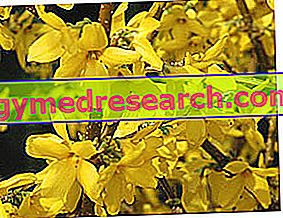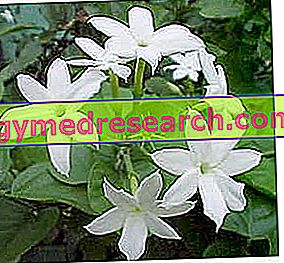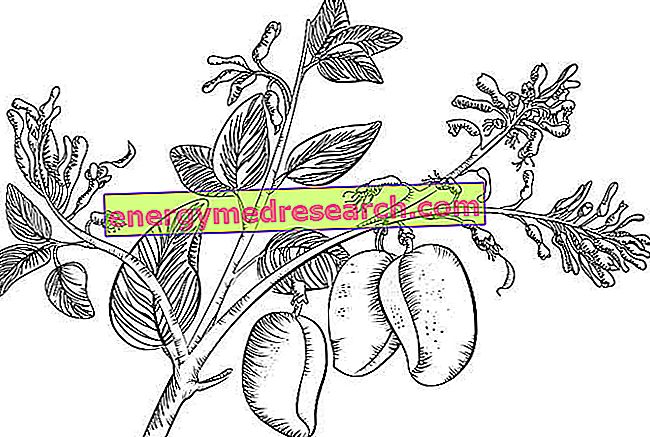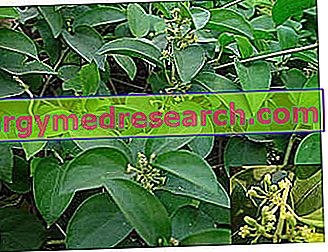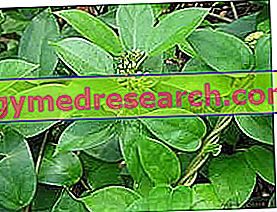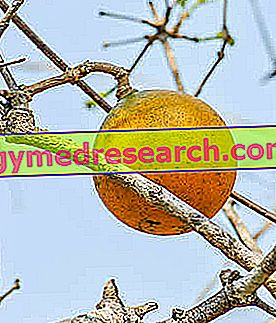In contemporary times, absinthe is often and improperly described as a hallucinogenic drink. No scientific study or systematic review or clinical case has shown that absinthe has hallucinogenic characteristics. The belief that absinthe induces similar effects is at least in part due to the fact that, in the nineteenth century, after about ten years of experiments on alcoholism (250 cases), the French psychiatrist Valentin Magnan highlighted rapid-onset hallucinations due to the administration of wormwood oil; this also made her distinguish the two forms of dependence: that of alcohol and that o
Category herbalist's shop
Introduction The canary yellow of its flowers is incomparable: forsythia is a rather "intrusive" shrubbery, in some ways, but even before the dawn of spring its colored corollas paint and embellish the still sparse vegetation. The forsythia is cultivated above all for ornamental purposes, due to its golden and iridescent floral foliage: however, forsythia is also used in the phytotherapeutic sphere, especially in the East
What is that? What is Galium Heel? Galium Heel is a homeopathic product indicated for the homotoxicological drainage of the organism. More precisely, Galium Heel is a homeopathic medicine composed of the association of various homeopathic remedies, among which we find Galium album and Galium aparine (hence the name of the final product)
Scroll down the page to read the summary table on the broom Broom Emblem of malignant nature → resistance and adaptability in arid places: object of extraordinary poetic works (eg Leopardi) Ginestre: group of bushy plants with fragrant yellow flowers Broom, symbolism and tradition Romans and Greeks → gorse: plants liked to attract bees (honey) Bible → the branches of the broom beaten by the wind disturbed Jesus Symbology → broom: humility and modesty Synonym → whip of Christ (pointed branches of the plant) Ginestra: genera and species Family : Leguminous Papilionaceae Very different kinds: Spar
Jasmine in history Jasmine is a evergreen climbing vine or shrub, originating in China, western Asia and northern India. From the reading of some sources, jasmine seems to have been imported into Europe around 1500, by the Spaniards; however, some authors are perplexed about this, since the ancient findings concerning the "Liber de Simplicibus" Code shift the date of import to the previous century, considering the depiction of jasmine in this text dating back to 1415
Premise The broom: how can we forget the poetry that pays homage to the Poet of pessimism? The broom, thanks to its marked resistance and ability to adapt in dry places, was the object of extraordinary poetic works, symbol of "step-mother nature" that hides the eternal struggle of the human against nature
What is that Griffonia - whose scientific name is Griffonia simplicifolia - is an evergreen plant belonging to the Fabaceae family, native to central-western Africa. Known and particularly appreciated for the content of 5-hydroxytryptophan (or 5-HTP), the griffonia extracts are used in food supplements whose use is mainly indicated in case of lowering of mood and insomnia
Introduction In the past, gymnema was classified among the natural remedies par excellence in the treatment of the so-called "sweet urine" (pathology better known as diabetes mellitus). On the other hand, just think of the etymology of the name "gymnema": it derives from "Gur mar", a term that, literally translated into the Hindu language, refers to "eat sugar"
Scroll down the page to read the summary table on gymnema. Gymnema: etymology of the term Gymnema: derives from "Gur mar", a term that, literally translated into Hindu, refers to "eat sugar" → in ancient folk medicine, it was recommended to chew gymnema leaves to reduce glycosuria Gymnema: main properties and popular uses Useful in the treatment of diabetes Also used in the treatment of hemorrhoids, cardiac deficits and eye defects Gymnema: botanical description Botanical name: Gymnema sylvestris Family: Asclepiadaceae Description: typical climbing plant Origin: Central Afri
Introduction In the previous article we analyzed the Gymnema plant both from a botanical and a chemical point of view, briefly listing all the ascribed therapeutic virtues. In this concluding discussion we will deepen only some of the medicinal properties attributed to this plant, as well as the main ones
What is that When we talk about Ignatia amara, nowadays, we want to indicate mainly a particular homeopathic remedy used for the treatment of some disorders of the nervous system. However, the name "Ignatia amara" also represents one of the many synonyms used to indicate the Strychnos ignatii plant, whose seeds are more commonly known by the name of Sant'Ignazio beans


